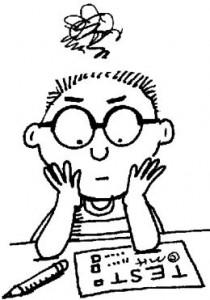
Cycle Smartly and Safely
Smart Cycling videos will help you understand how to ride safely, improve comfort, find the right bike and gear, and your rights as a bicyclist.
Click here for Smart Cycling videos
Bike Share Inventory
Location of Bike Racks on Campus
- Cypress Hall next to sidewalk at front entrance
- Oak Hall/Rear Entrance
- Moore Hall/left side of front entrance
- Health Science/East and West Entrances
- Sampson Hall/East and West Entrances
- Dial/front and back entrances
- Jones Center/North Entrance and West Entrance
- University Center/West Sideway Entrance
- GPAC/South side of front entrance
- Education Bldg. Front side/towards BA
- Belk and North/On back of buildings
- International Programs on Dogwood St.
- Village Apartments/Rear entrance of all buildings
Bicycling Rules of the Road
Bicycles are considered vehicles, and cyclists have the same rights and responsibilities to follow the rules of the road as motorists. When riding, always:
- Obey All Traffic Laws. A bicycle is a vehicle and you’re a driver. When you ride in the street, obey all traffic signs, signals, and lane markings.
- Watch for Pedestrians. Bicyclists must yield the right-of-way to pedestrians within marked crosswalks or within unmarked crosswalks at intersections.
- Yield to Traffic When Appropriate. Almost always, drivers on a smaller road must yield (wait) for traffic on a major or larger road. If there is no stop sign or traffic signal and you are coming from a smaller roadway (out of a driveway, from a sidewalk, a bike path, etc.), you must slow down and look to see if the way is clear before proceeding. This also means yielding to pedestrians who have already entered a crosswalk.
- Be Predictable.Ride in a straight line, not in and out of cars. Signal your moves to others.
- Stay Alert at All Times.Use your eyes AND ears. Watch out for potholes, cracks, wet leaves, storm grates, railroad tracks, or anything that could make you lose control of your bike. You need your ears to hear traffic and avoid dangerous situations; don’t wear a headset when you ride.
- Look Before Turning. When turning left or right, always look behind you for a break in traffic, then signal before making the turn. Watch for left- or right-turning traffic.
- Watch for Parked Cars. Ride far enough out from the curb to avoid the unexpected from parked cars (like doors opening, or cars pulling out).
- Control Your Bicycle.Always ride with at least one hand on the handlebars. Carry books and other items in the bicycle carrier or a backpack.
- Watch for and Avoid Road Hazards.
- Avoid Riding at Night. If riding at night, wear neon, fluorescent, or other bright colors or something that reflects light, such as reflective tape or markings, or flashing lights. Remember just because you can see a driver doesn’t mean the driver can see you.
- Wear a Helmet. Helmets are available for checkout.
- Remove Headphones. Bicyclists may not wear earplugs or a headset.
- Be Alert to the Weather. Check the local weather forecast before heading out to ride. During inclement weather, bicycle rentals will be stopped when rider safety is in jeopardy. Riders who are already out when inclement weather occurs will be called and notified of the warning.
- Secure the Bicycle. Please remember to lock the bicycles and/or do not leave them unattended. If the bicycle is lost or stolen, you will be responsible for a $400 replacement fee.
- Return the Bicycle on Time. A $10 late fee will be assessed for a bicycle not returned before 8:30 pm of the check out day.
- Park the Right Way. Do not park bicycles in a manner that obstructs pedestrians. Bicycles must be secured to a bicycle rack; do not lay bicycles on their sides on the sidewalk.
- Report Problems.To report a mechanical or other issue, please call 910.521.6575.
- Use Hand Signals.

Making Sure the Bicycle is Ready to Ride
- Seat. Adjust the bicycle seat—make sure it is level.
- Tires. Make sure the tires are properly inflated.
- Brakes. Check to make sure brakes work.
